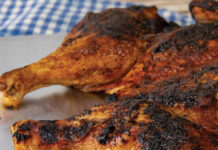As a dog or cat parent, you are responsible for your pet’s well-being and making good decisions about what’s best for him or her. Providing your cherished companion with a high-quality, nutritionally balanced diet is one of the most important things you can do to ensure your pet lives a happy and healthy life.
A balanced pet food recipe formulated with high-quality ingredients provides your pet with the optimal mix of the proteins, fats, carbohydrates, vitamins and minerals he or she needs to thrive. For premium quality, look for recipes that are minimally processed; made with fresh meats, poultry and fish; and contain no artificial preservatives, flavors or colors.
While the quality of ingredients is important, it’s also crucial to choose a recipe that is specific to your pet’s life stage and breed size. This helps ensure it contains the right balance of nutrients to meet your pet’s specific needs, including hip and joint support and weight management as he or she gets older.
Puppy and kitten recipes are specially formulated with higher levels of protein and essential fats to help support the needs of growing pets. Conversely, adult and senior pets may benefit from diets that are lower in calories and fats to help maintain a healthy weight as their metabolisms and activity levels slow.
Large breed dogs may also benefit from ingredients in their diets like glucosamine, chondroitin and green-lipped mussels to support healthy hips and joints as they age. Smaller kibble and breath freshening ingredients like parsley and peppermint are often well-suited for small breed dogs.
By choosing carefully balanced pet foods made with premium ingredients, you can take nutrition to another level for your pet. One example is Now Fresh recipes for dogs and cats. Each kibble recipe is made using fresh, de-boned muscle meat and no by-product or meat meals. The recipes also feature more than 20 nutrient-rich superfood ingredients.
Consider the important benefits superfoods can provide your pet and look for ingredients such as:
*Whole nest-laid eggs: Eggs are a complete protein, containing all the essential amino acids in the optimal amounts dogs and cats need.
*Pumpkin: Rich in beta-carotene and prebiotic fiber, pumpkin helps support healthy digestion.
*Blueberries: A great source of essential fiber and manganese, blueberries are also rich in antioxidants that help support healthy immune systems.
*Pomegranate: This fruit is rich in antioxidants and a good source of dietary fiber, folate, vitamin C and vitamin K.
*Papaya: A tropical fruit, papaya is a natural source of digestive enzymes.
*Cranberries: With antioxidants to support immunity and antimicrobial properties, which can help support urinary tract health.
*Strawberries: An excellent source of the antioxidant vitamin C, B vitamins, dietary fiber and essential minerals.
When selecting the right food for your pet, look for a statement on the packaging that confirms it has been formulated to meet the nutritional levels established by the Association of American Feed Control Officials. An option like Now Fresh also clearly indicates on the package which life stage and breed size the recipe has been formulated for.
Learn more about pet nutrition at NowFresh.com.
Proper Puppy Nutrition
Choosing the right food is an important part of providing your pet with good nutrition, but there are other aspects of feeding that can help ensure your pet is getting the most out of every meal.
Puppies need smaller, frequent meals consistently spaced throughout the day. This helps them learn routines while continually replenishing their fast-growing bodies with energy and nutrients. At 6 months, you can consider reducing your puppy’s meals to two per day.
You can reinforce routines and help set good bathroom habits by always taking your puppy for a potty break after a meal.
Keeping your puppy well hydrated is also important. Always leave a bowl of fresh water where he or she can access it during the day then pick it up a few hours before bedtime to help with house training. Incorporating wet food can also increase water intake, but be sure to balance it out by reducing the dry food you offer so you’re not adding excess calories.
Story & Photo courtsey of Family Features
Source: Petcurean



































